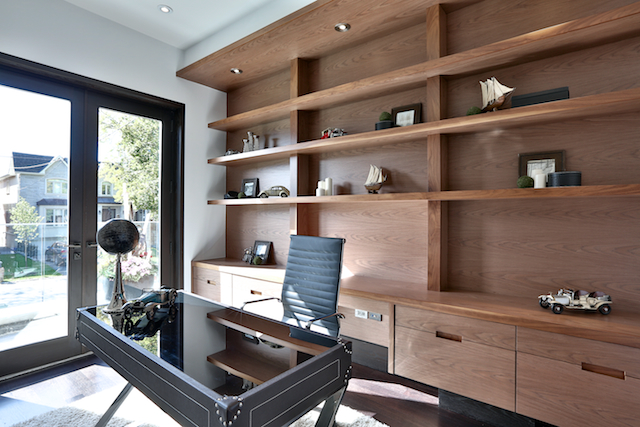5 Trends Shaping Residential Design

2016
When it comes to real estate, Toronto and Canada are in a period of transition. Home-buying today looks different than it did in decades past: The world is recovering from 2008’s housing collapse; slow economic growth and the proliferation of a ‘gig’ economy mean millennials are less empowered to purchase houses than their predecessors were. In Canada specifically, we are witnessing a decline in oil prices and economic power returning eastward, to cities like Toronto. These demographic and economic realities will have an impact on home design. What will that impact be? Well, who better to forecast than the people who will be partly responsible for answering this question: the architects who will be creating those very home designs. The American Institute of Architects consulted with over 600 firms to assess and define emerging home design trends, comparing their latest findings against data stretching back to the last housing boom of 2005.
If you’re planning a residential architecture project, what follows are some trends you should be aware of.
Outdoor Living is on the Rise
Homeowners are investing predominantly in outdoor living spaces and blended indoor/outdoor living spaces. The AIA’s Chief Economist, Kermit Baker, attributes this to homeowners wanting to getting maximum utility out of their property, while simultaneously “giving them a sense of connection to the outdoors.” It also seems to be the case that people are prioritizing informality and the enjoyment of downtime—talk of ‘work-life balance’ is ubiquitous. Whatever the reason, homeowners are now building outdoor kitchens and even furnished outdoor rooms in record numbers, in addition to the outdoor grills, decks and patios which have historically been the focus of outdoor renovations.
Home Offices and Working From Home
The economic downturn resulting from the housing market crash led to many cutbacks and layoffs, and has produced, at least temporarily, an evolving workforce. People are working or job hunting from home in much greater numbers than before: Many people have become more entrepreneurial now, whether they’re starting small businesses, freelancing, or simply moving from contract to contract. At the same time, technological advances (software and hardware; Internet connection speeds) mean that we are able to perform our jobs, teleconference and seek out new leads from anywhere, so long as we have a decent computer and a decent Internet connection. For the foreseeable future, a comfortable home offices that is conducive to productivity and efficiency will remain a wise investment for any homeowner who is active in the workforce.
The Internet of Things and Increased Connectivity
Homes are increasingly connected, and increasingly connected in different ways. The period since the Great Recession has witnessed fantastic technological innovation. Smart phones and tablets have been purchased in staggering quantities, meaning that many homeowners are renovating their homes to introduce the necessary infrastructure to support these myriad devices. Constant improvements in affordable WiFi speeds, paired with technical innovations, can inspire some projects that are about aesthetic improvements: goodbye, stereo setup with tangled wires; hello, wireless Bluetooth speakers! Finally, with homeowners’s increasing interest in sustainability (and their natural interest in reducing costs), we are seeing more and more houses equipped with smart devices to manage temperature, lights, appliances, reduce water usage, make lighting more efficient, and so on.
Infill Development and Urban Density
The world is urbanizing: the amount of the global population living in cities is expected to rise from just over half today to two-thirds by 2050. If you’ve lived in Toronto for a while, you’ve looked at the skyline and observed this trend firsthand, with ever-present cranes putting up high-rises all across the city. People want to live in places that are closer to jobs, have better infrastructure (such as public transportation), and more bustling commercial opportunities. As a result of the demand for property in urban centres, homeowners and residential architects are getting increasingly creative: they are often having to get more and more ‘mileage’ out of smaller and smaller pieces of property, leading to many innovative residential architecture designs. This trend is expected to continue, according to the residential architects polled. House size is less of a selling point than it has been in the past; personalized and creative design, on the other hand, are replacing it as an attractive feature.
Kitchens Remain a Household Hub
Even as economic factors led many (prospective) homeowners to scale back their feature-requests, kitchens have persisted as a centrally important part of the home. Indeed, kitchens are, in many homes, the central hub for family interactions. This trend is expected to continue, with kitchens abutting family spaces in many homes; the centrality of the kitchen is not likely to go anywhere, according the residential architects. When considering a residential architecture project, take time to give serious consideration to your kitchen and how it connects to the rest of your home.
Conclusion
Homes are changing with the times. Economic factors and real estate markets are driving these changes to a large extent, but so are technological changes—even if they don’t quite resemble The Jetsons or those old World’s Fairs. If you’re preparing a residential architecture project in Toronto (with its unique characteristics as an economic driver in Canada and a competitive, urban housing market), take a minute to think about housing trends. Doing so will give you a leg up in building a house that serves you well not just for today, but for tomorrow and beyond.
Categorized in: Architecture News, Helpful Resources
